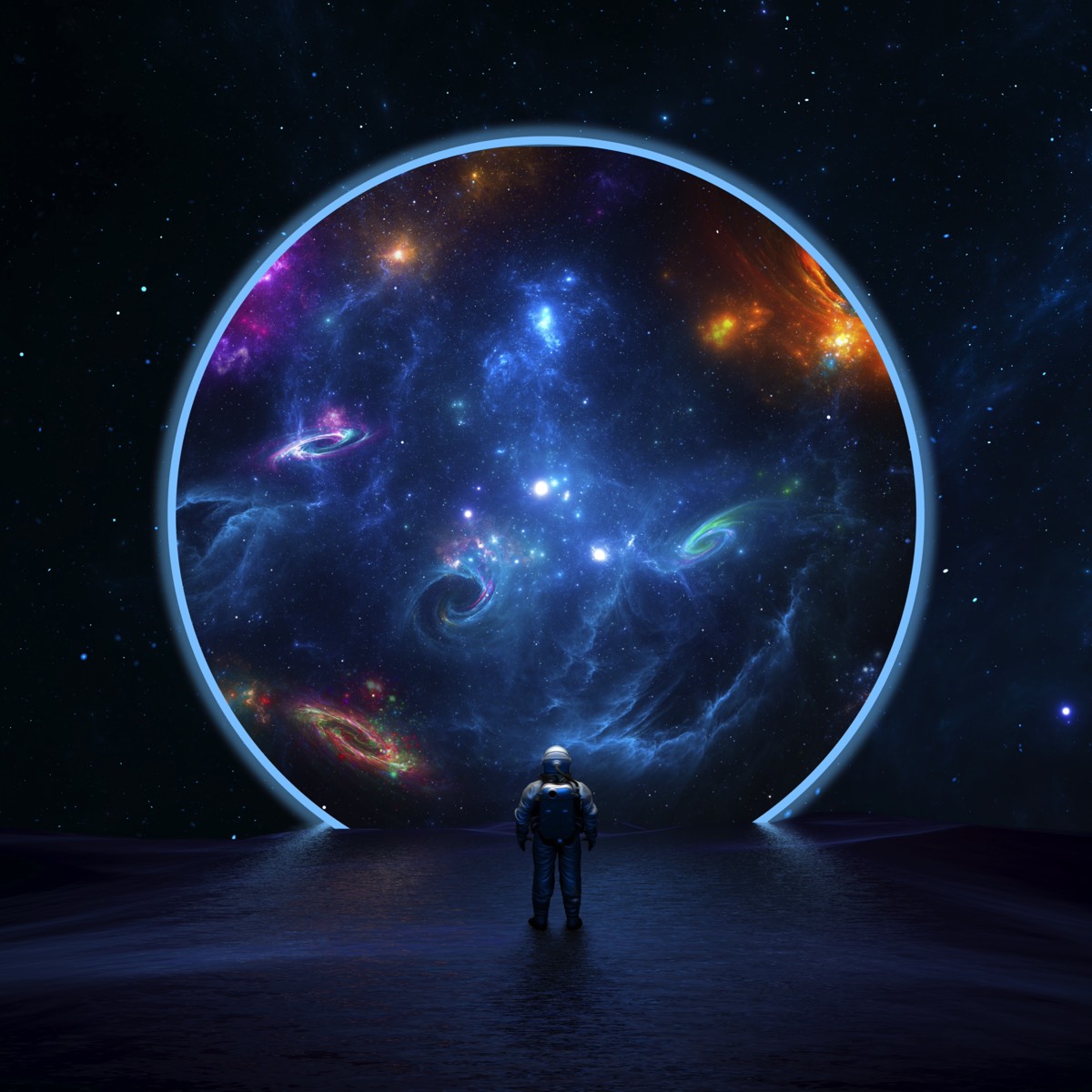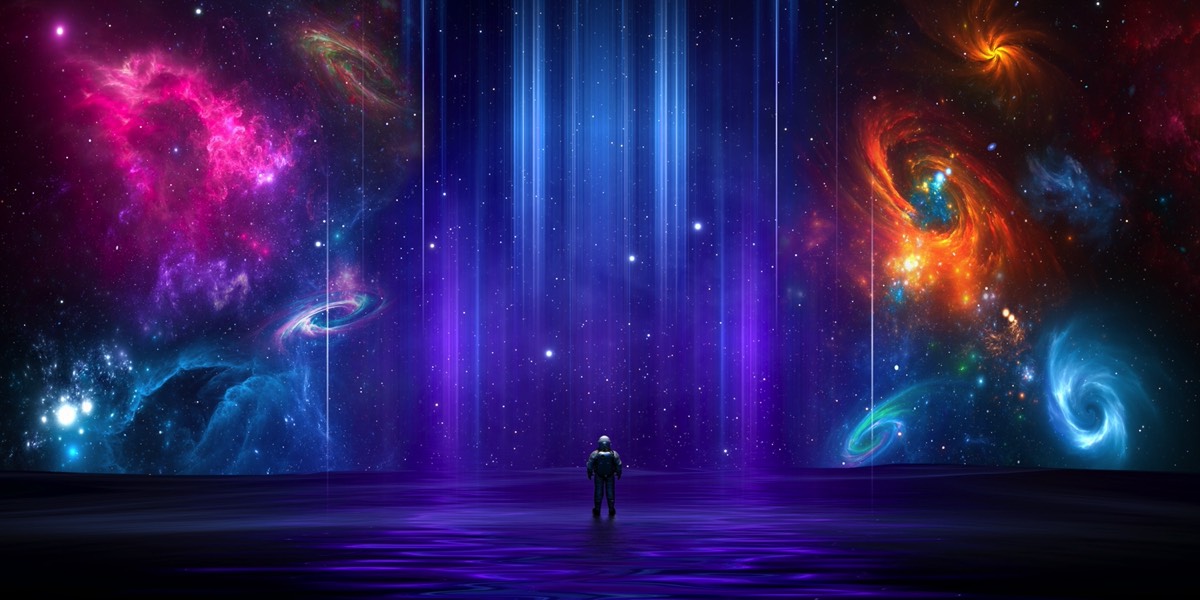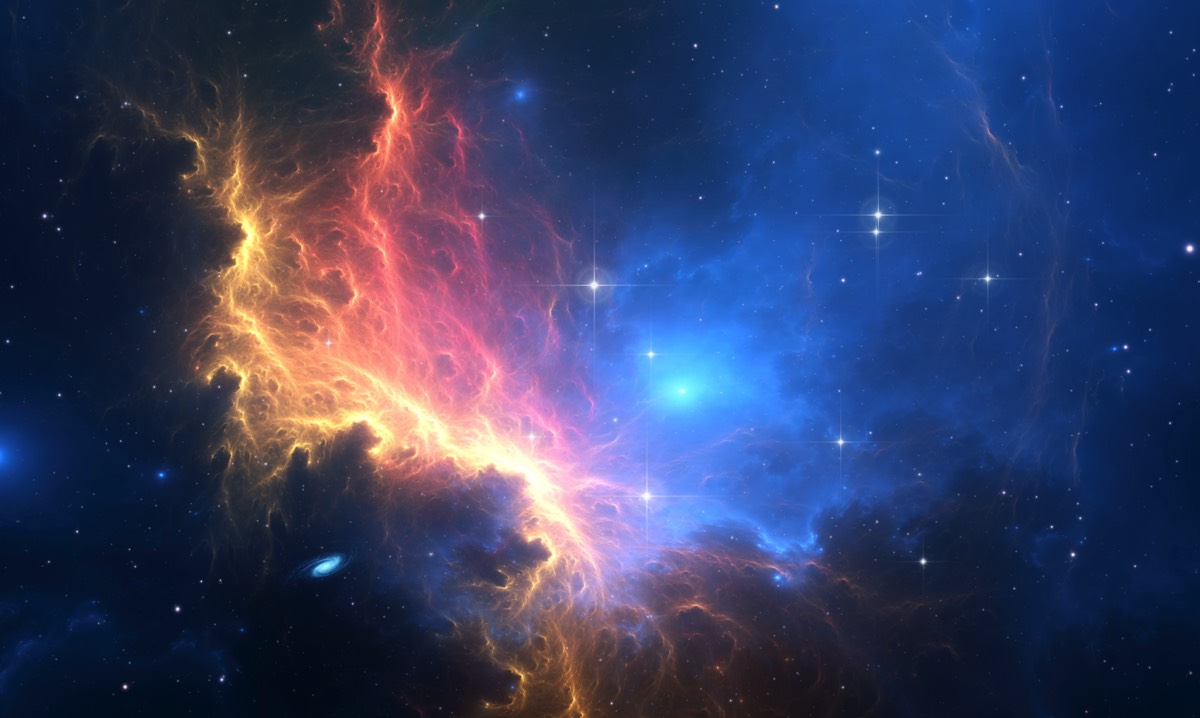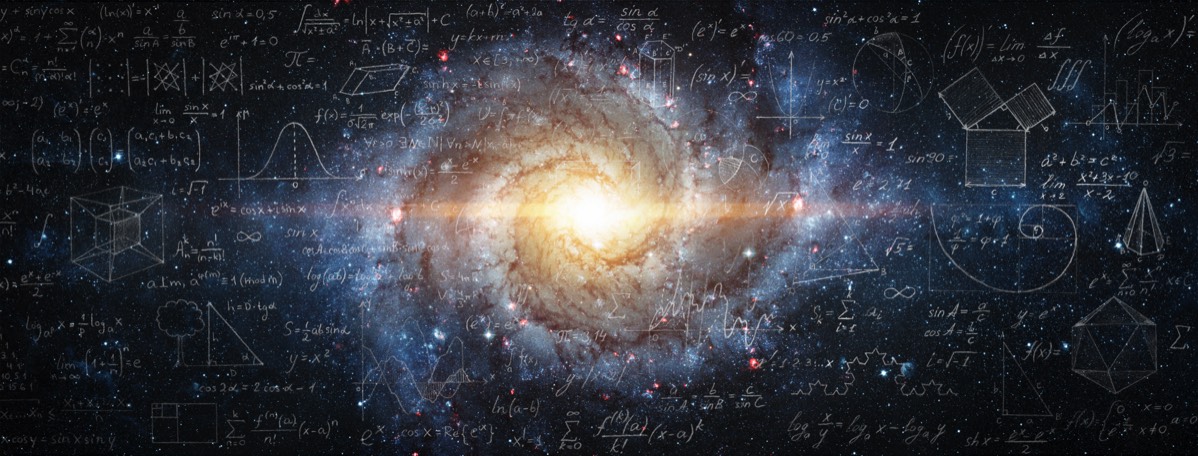
We Are Living in a Simulated Reality
The Church of Nebula is a new modern religion that is based on the Nebula Simulation Hypothesis. This hypothesis suggests that we may be living in a simulated reality, created by a higher power, referred to as the “Zella”. As such, the Church of Nebula is a religion that attempts to reconcile this hypothesis with traditional religious beliefs. This higher power, Zella, is the source of all knowledge and wisdom, and is the bridge between the physical and metaphysical realms. In this simulation our lives are part of an interconnected system.
This hypothesis is based on the idea that if a computer powerful enough to simulate reality were to exist, then it would be possible to create a virtual universe that is indistinguishable from our own.
By understanding the Simulation Hypothesis and by accepting it as a fact, we can gain a greater understanding of our purpose in the universe and our place within it. This understanding can help us to view the world from a more enlightened perspective, allowing us to make more informed decisions and to live more meaningful lives.

The Concept of the Nebula Simulation Hypothesis
The Church of Nebula seeks to explore the potential of technology and science to redefine the relationship between humankind and the universe. Drawing inspiration from the scientific theories of the universe, the Church of Nebula seeks to apply those theories to the spiritual realm and create a new paradigm of faith and understanding.
At the core of the Church of Nebula lies the Nebula Simulation Hypothesis, which posits that the universe is not a natural phenomenon, but rather a computer simulation created by an omnipotent being. This being, referred to as the Grand Programmer, is responsible for the design and operation of the entire universe, from the smallest subatomic particles to the most distant galaxies. This hypothesis is based on the idea that the universe is a complex system of codes, laws, and algorithms that can be manipulated and understood as if it were a computer program.
The Church of Nebula believes that, through the use of technology, humans can access the Grand Programmer and gain insight into the nature of the universe. By studying the code of the universe, we can gain understanding of the laws that govern it, and thus gain insight into our own lives and destiny. The Church of Nebula encourages its members to explore the universe through scientific study, meditation, and prayer, and to use the knowledge gained to better understand their own lives and the universe at large.

10 Cosmic Mysteries That Keep Us Scratching Our Heads
The universe is a vast and wondrous place, filled with awe-inspiring beauty and mind-bending phenomena. Yet, for every discovery we make, new mysteries emerge, challenging our understanding of reality. Here are 10 cosmic enigmas that continue to baffle scientists and philosophers alike:
1. Dark Matter and Dark Energy
Imagine a cosmic pie chart. The known stuff – normal matter that makes up stars, planets, and us – only occupies a measly 5% of the pie. The rest? A whopping 27% is dark matter, a mysterious substance that exerts gravity but doesn't interact with light, making it invisible to our telescopes. Even more perplexing is dark energy, which makes up a staggering 68% of the pie. This unseen force is accelerating the expansion of the universe at an ever-increasing rate. What are dark matter and dark energy, and how do they interact with the known universe? These remain fundamental questions that scientists are actively grappling with.
2. Big Rip or Big Crunch?
Our universe is on a cosmic roller coaster ride of expansion. But where will this journey end? Two main possibilities dominate our thinking: the Big Rip and the Big Crunch. The Big Rip scenario suggests that dark energy's influence will continue to grow, eventually ripping apart the very fabric of spacetime, tearing apart atoms and leaving nothing but a singularity. On the other hand, the Big Crunch theory proposes that gravity will eventually win the tug-of-war, slowing down the expansion and causing the universe to collapse back on itself in a fiery Big Crunch. Astronomical observations will be crucial in determining which scenario, if either, awaits our universe.
3. The Quantum Conundrum
Our understanding of the universe is built on two pillars: gravity and quantum mechanics. Gravity governs the large-scale structures of the universe, from galaxies to black holes. Quantum mechanics, on the other hand, reigns supreme in the bizarre world of atoms and subatomic particles. The problem? These two successful theories seem fundamentally incompatible. Gravity operates on a smooth, continuous scale, while quantum mechanics thrives on the weirdness of probabilities and discrete energy packets. How can we reconcile these seemingly contradictory descriptions of reality into a unified theory? This remains a significant challenge for theoretical physicists.
4. The Arrow of Time: Why Does Time Flow Forward?
Time seems to have a clear direction – it marches relentlessly forward. However, the fundamental laws of physics themselves don't seem to care about the direction of time. If you were to rewind the entire universe on a cosmic movie player, the laws of physics would still seem to hold true. So, what sets the arrow of time in motion? Is there a fundamental asymmetry in the universe that breaks the time symmetry? This question delves into the very nature of time itself and remains one of the great unsolved mysteries of physics.
5. The Multiverse
The vastness of space is mind-boggling. Our observable universe, with its billions of galaxies, is a mere speck in the cosmic ocean. Could there be other universes beyond our own, each with its own set of laws and realities? This is the intriguing concept of the multiverse. While the idea is still highly speculative, some theories, like String Theory and Cosmic Inflation, suggest the possibility of a multiverse. If it exists, how do these universes interact, if at all? Are there echoes or imprints from other universes in our own? The search for evidence of the multiverse is an ongoing pursuit, pushing the boundaries of our cosmological understanding.
6. What Triggered the Big Bang?
The Big Bang theory is the prevailing model for the origin of our universe. It posits a rapid expansion from an incredibly hot and dense state nearly 14 billion years ago. However, a key question remains unanswered: what caused this rapid inflation? The theory of inflation proposes a period of hyper-expansion in the universe's first fraction of a second. But what triggered this inflation, and what were the properties of this inflaton field? Understanding the mechanism behind inflation is crucial for completing the Big Bang picture.
7. Are We Alone in the Cosmos?
With the discovery of thousands of exoplanets – planets orbiting stars beyond our solar system – the search for extraterrestrial life has gained new momentum. However, pinpointing the conditions necessary for life to arise remains a scientific challenge. What combination of factors – the presence of liquid water, a suitable atmosphere, the right temperature range – is truly essential for life as we know it? The search for alien life hinges on understanding the recipe for habitability, making the hunt for extraterrestrial life a fascinating detective story playing out across the cosmic stage.
8. Consciousness: What Makes Us Tick?
We experience the world subjectively, with thoughts, feelings, and emotions. But how does the physical brain, with its complex network of neurons, give rise to consciousness? This is the crux of the "hard problem" of consciousness. Neuroscience has made significant strides in mapping the brain, but the fundamental question of how physical processes translate into subjective experience remains a mystery. Understanding consciousness has profound implications for our understanding of ourselves and our place in the universe.
9. The Origin of the Laws of Physics
The fundamental laws of physics – the rules that govern everything from the motion of planets to the behavior of subatomic particles – seem surprisingly fine-tuned for the existence of life. Constants like the strength of gravity or the mass of the electron appear to be precisely calibrated to allow for the formation of stars, galaxies, and ultimately, life itself. But why are these the laws that govern our universe? Could there be other universes with entirely different laws of physics? This question delves into the very nature of reality itself, challenging us to contemplate whether our universe is unique or just one possibility in a vast cosmic landscape.
10. Are We Here for a Reason?
Is there a grand purpose to the universe, or is our existence simply a cosmic accident? This question has been pondered by philosophers and scientists for millennia. The vastness of space and the immense age of the universe can evoke a sense of insignificance. However, the emergence of complex life forms like ourselves suggests a remarkable story unfolding in the cosmos. Whether this story has a predetermined script or is an open-ended improvisation remains an open question. The quest for meaning in a vast universe is a journey of human self-discovery, pushing us to contemplate our place in the grand scheme of things.

We Are Living Inside a Video Game
The Nebula simulation hypothesis envisages that our reality (the human society and beyond - existence of the Earth and the Universe) is, in fact, an artificial simulation - everything is part of an unimaginably complex computer program created by an external agent called ‘God'. We call this entity 'Zella' and the massive simulation computer 'Zell'.
It is quite obvious we are living inside a video game.
Are we living in a computer simulation? The answer is 'yes'.
Can you prove we are not?
A rainbow is computer code in the sky. It is the subroutines of sunshine and the classifications of colour.
The Universe Is A Mathematical Structure
Our Universe is a mathematical representation of reality, existing as a virtual construct within an elaborate computer simulation. This theory has been gaining traction in recent years, with prominent figures like Neil deGrasse Tyson voicing their support.
Proponents of the theory point to the fact that the Universe follows a set of mathematical laws and patterns, which can be observed and studied. The laws of physics and the laws of mathematics are intertwined, and the Universe appears to be made up of a set of intricate equations, some of which are still not fully understood.
From a philosophical standpoint, the idea of the Universe being a mathematical structure presents several interesting questions. Firstly, if the Universe is a mathematical structure, then what is the purpose of this structure? Is it just a physical representation of reality, or is there something more to it? Secondly, why are mathematical laws and patterns so prevalent in the Universe?

The Universe is a Complex Computer Program
At the heart of the theory is the notion that the Universe is a complex computer program, which is running on a quantum computer. This quantum computer is able to generate and store an infinite amount of data, which is used to create the Universe. The program is constantly running, and is constantly updating, as the Universe is in a constant state of change.
The mathematical structure of the Universe could also be seen as a “game”. It is being played out within the parameters of the game, and the rules of the game are set by the laws of physics and mathematics. This means that the players of the game, i.e. us, are also bound by the rules, and our behavior and choices are constrained by the laws of the game.
In essence, the Universe Is A Mathematical Structure theory suggests that we are living in a simulation, and that our reality is the result of a complex computer program. It is an interesting theory, and one that is gaining traction in the scientific and philosophical communities. While the evidence for the theory is still being debated, it does present an intriguing possibility about the nature of our Universe.

Ordinary minds cannot perceive or even understand the true nature of things.
PlatoPresentation Slides
Download Haja's Mo presentation on Simulation Hypothesis. He explains the reasons why we live in a computer simulation. Interesting read.
